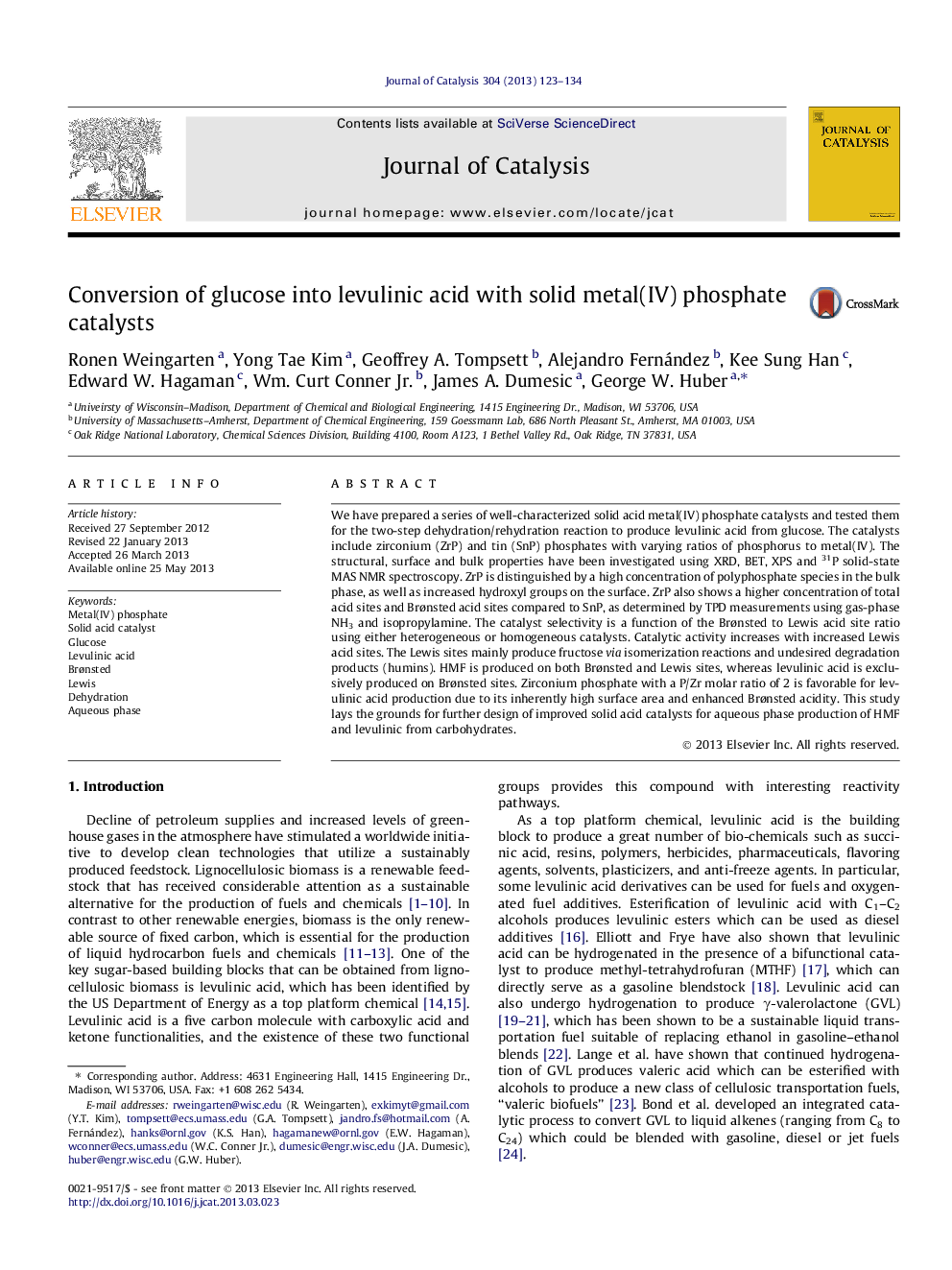| کد مقاله | کد نشریه | سال انتشار | مقاله انگلیسی | نسخه تمام متن |
|---|---|---|---|---|
| 61229 | 47570 | 2013 | 12 صفحه PDF | دانلود رایگان |

• Levulinic acid selectivity increases with the Brønsted to Lewis acid site ratio.
• ZrP has a high content of polyphosphates in the bulk and hydroxyls on the surface.
• Zirconium phosphate has higher Brønsted acidity compared to tin phosphate.
• ZrP with a P/Zr molar ratio of 2 is favorable for levulinic acid production.
• Lewis sites mainly produce undesired degradation products (humins) and fructose.
We have prepared a series of well-characterized solid acid metal(IV) phosphate catalysts and tested them for the two-step dehydration/rehydration reaction to produce levulinic acid from glucose. The catalysts include zirconium (ZrP) and tin (SnP) phosphates with varying ratios of phosphorus to metal(IV). The structural, surface and bulk properties have been investigated using XRD, BET, XPS and 31P solid-state MAS NMR spectroscopy. ZrP is distinguished by a high concentration of polyphosphate species in the bulk phase, as well as increased hydroxyl groups on the surface. ZrP also shows a higher concentration of total acid sites and Brønsted acid sites compared to SnP, as determined by TPD measurements using gas-phase NH3 and isopropylamine. The catalyst selectivity is a function of the Brønsted to Lewis acid site ratio using either heterogeneous or homogeneous catalysts. Catalytic activity increases with increased Lewis acid sites. The Lewis sites mainly produce fructose via isomerization reactions and undesired degradation products (humins). HMF is produced on both Brønsted and Lewis sites, whereas levulinic acid is exclusively produced on Brønsted sites. Zirconium phosphate with a P/Zr molar ratio of 2 is favorable for levulinic acid production due to its inherently high surface area and enhanced Brønsted acidity. This study lays the grounds for further design of improved solid acid catalysts for aqueous phase production of HMF and levulinic from carbohydrates.
A series of solid acid metal(IV) phosphate catalysts have been tested for the two-step dehydration/rehydration reaction to produce levulinic acid from glucose. Zirconium phosphate with a P/Zr molar ratio of 2 (ZrP2) is favorable for levulinic acid production due to its high surface area and enhanced Brønsted acidity.Figure optionsDownload high-quality image (47 K)Download as PowerPoint slide
Journal: Journal of Catalysis - Volume 304, August 2013, Pages 123–134